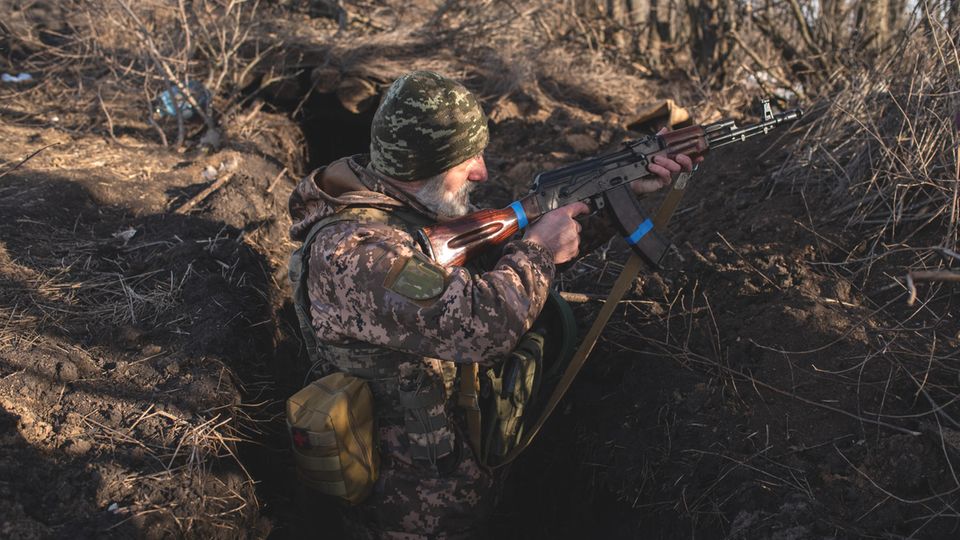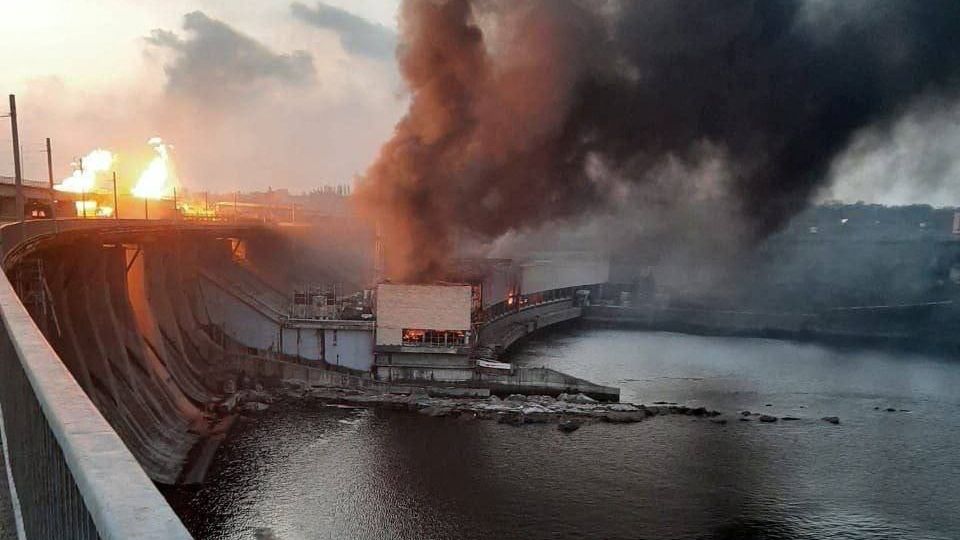analysis
War in Ukraine
The flower – why the Russian invasion of Ocheretyne is shaking the Ukrainian front
Soldiers of the 71st Brigade in the Avdiivka area
© AP
The Russians got behind the Ukrainian defense lines and were able to occupy a handful of villages. If Ukrainian troops do not quickly find a firm foothold, the Donbass may be lost.
North of Avdiivka, Russia has captured the small Ukrainian town of Ocheretyne in a surprise move. This was made possible by the surprise withdrawal of the 115th Brigade. It remains controversial whether the advance was due to a mix-up of dates or because the brigade wanted to avoid combat. With the capture of Ocheretyne, the Russians reached the rear of the Ukrainian defense lines. Since Otscheretyne is located on a ridge, the place dominates all surrounding areas. Berdychi, which had been fought over for a long time, had to be abandoned. Further south, the Russians advance west from Tonen’ke, so that the Ukrainians find themselves in a kind of front bump in between. In the north of Otscheretyne the same picture, here too the Russians open a sack between Otscheretyne and Novokalynove.
Crushing superiority against Ukraine
It is not just the Otscheretyne accident alone. The Ukrainian armed forces in Donbass find themselves in a more critical situation than ever before. It starts with the much-cited shortage of artillery shells. This means that the Russians behind the front can act more openly and unhindered. They set up smoke generators to obscure movement. They can use their artillery without fear of return fire, including the dreaded thermobaric rocket launchers. The Ukrainians are trying to compensate for the lack of counter-artillery with Himars launchers, with the effect of destroying them. As with air defense, it’s a downward spiral. The losing side suffers ever greater losses. Added to this are the attacks by Russian glide bombs, which make the previous trench warfare impossible. The Russians are also improving technically. They are increasingly using laser-guided precision grenades; in addition to simple explosion bombs, gliding bombs with cluster ammunition are also being used.
Less noticed is the lack of heavy equipment. Kiev’s elite formations were equipped with Leopard 2, Challenger and US Abrams tanks. Because the heavy tanks are so vulnerable in open terrain and probably also to spare the Western allies the embarrassment, they are hardly seen at the front anymore. Abrams tanks are said to have been completely withdrawn. You can translate it like this: Kiev’s heavy tank brigades no longer have any main battle tanks.
Shortage of soldiers
Added to this is the chronic shortage of personnel on the Ukraine side. The extensive position systems in Donbass have never been as tightly manned as the trenches in the First World War. The Russians are trying to find a denuded spot to occupy with a small squad. Then buggies, motorcycles or turtle shells are used. There are usually casualties in the approach, but once the Russians are in position, protected by their drones and artillery, the Ukrainians are usually unable to throw them out because they lack the strength and men to counterattack. This leads to the Russian advance accelerating. As a reminder, the Ukrainian summer offensive was so slow because the Ukrainians had to conquer every strip of trees and every trench five to eight times before they could establish themselves, because each time they were thrown back by the Russians.
Russians overstretch the defenders
These factors make a break of just a few kilometers so dangerous. Kiev finds it difficult to get 50 men together for a counterattack on the outskirts of town; A major counter-operation to cut off the Russian “corner” at Ocheretyne is out of the question. The Russians have a main strategic thrust, but for now they are attacking wherever possible. They cause the slump to blossom; from the shape of a spike it turns into a flower. The idea behind this is to keep extending the contested lines so that the defeated Ukrainians have more and more difficulty maintaining the length of the front. The Ukrainian front is slipping over a length of around 30 kilometers. Currently, it does not appear that Ukrainian troops will find another line of prepared positions and fresh reserves nearby.
Strategic option
In contrast, the Russians should be able to add two fresh brigades with around 10,000 men. If they maintain their momentum, they could try to push north along the main H20 road to get closer to the town of Kostiantynivka or even threaten it in the rear a little further west. Because of the distance of almost 40 kilometers, this will not happen in the next few weeks. But strategically, Ukraine’s entire Donbass front could be unhinged near Kostiantynivka. Kostiantynivka, along with the cities of Slovyansk in the north and Kramatorsk, is part of the last line of defense in the east. Kiev must definitely prevent the Russians from getting behind this chain of cities.
The perfidious thing is that these Russian operations are already preparing for the summer offensive at the end of the winter offensive. If Kiev sends more troops to Donbass to stop Putin there, they will be missing elsewhere. For example, if the Russians launch an attack in the Kharkiv and Sumy area. This scenario is not imminent. Next week, however, will show whether the Ukrainian defenders can find positions that will give them support. Or whether other sections of the front will slide.




